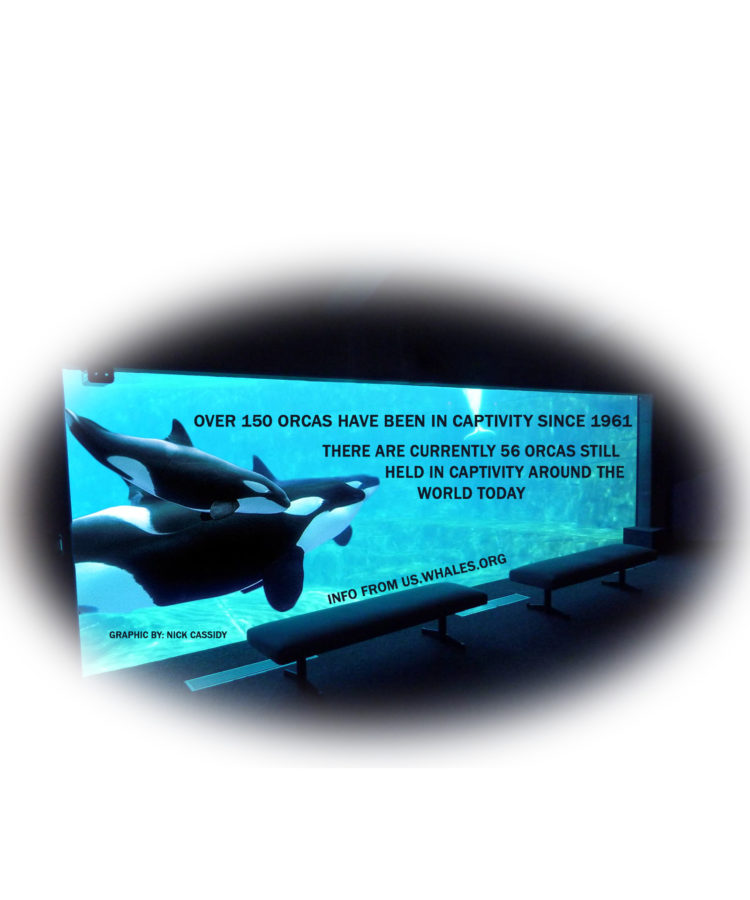SeaWorld ends orca performances
Company receives undeserved praise
April 20, 2016
Last November, SeaWorld pledged to end the theatrical orca shows at its San Diego location in 2016. The shows are supposed to be replaced next year with more “natural” and educational shows with its San Antonio and Orlando locations following suit in 2019. On March 17, the company went further and announced, in a joint statement with Humane Society President Wayne Pacelle, that it will no longer breed orcas.
Following years of criticism for its cruel treatment of animals, the company’s decision has been met with both praise and skepticism. Although most of the latter may be a product of mere cynicism, plenty of evidence suggest the SeaWorld’s sudden attitude shift is driven not by repentance, but by finances.
After the release of “Blackfish,” a 2013 documentary very critical of the company’s treatment of orcas, SeaWorld’s profits began to fall. Its second quarter net income decreased 84% from 2014 to 2015, according to the company’s earnings reports. Attendance in 2015 dropped over 100,000 from the previous year.
Reports from former employees of orcas ripping skin off of each other while fighting because of how cramped they were worsened SeaWorld’s reputation and hurt profits even more.
The revelation that SeaWorld employees had infiltrated animal rights organizations to secretly gather information had a similar effect. Last year, the California Coastal Commission forbade a proposed expansion of SeaWorld San Diego unless they agreed to stop breeding orcas.
It comes as no surprise that the for-profit company is trying to repair its reputation. The alternative choice is to keep losing money.
“We are an organization that needs to have cash flow to [succeed] and unfortunately, the trends were not in our favor,” said SeaWorld CEO Joel Manby during a webcast last week. Manby’s use of the word ‘unfortunately’ when discussing the decision to stop breeding orcas, is very telling. This was mostly, if not entirely, a financial decision.
That is not to say the choice should not have been made. The benefits to even a few animals are enough to justify the decision. But they are not enough to redeem SeaWorld or to warrant the praise the company is receiving. Point-blank, they are not enough.
While orcas will no longer be bred by SeaWorld, the ones that are already alive and one that will be born soon, will be forced to spend the rest of their lives in SeaWorld’s notoriously small and overcrowded tanks where, again, orcas have ripped each other’s skin off and even killed each other.
In a recent statement, SeaWorld addressed critics’ calls to relocate the orcas away from SeaWorld: “While most are celebrating these announcements, some critics want us to go further; they believe we should simply ‘set free’ the whales and release them into the ocean. We believe that would likely be a death sentence for our whales.”
With no experience living on their own and having become accustomed to the food and medical care provided by SeaWorld, the whales would certainly have a difficult time surviving in the ocean.
That is why many critics believe that the whales should be placed into sea sanctuaries. If this were done, the whales would live in the ocean but in fenced-off pens that would allow them access to the things they need because they were raised in captivity. At the same time, they would get to swim in the oceans and overall, live in a manner more akin to their wild counterparts.
SeaWorld has taken to calling sea sanctuaries, “sea cages” and claims that they would be as, if not more dangerous than releasing the orcas into the ocean because they would be “sitting ducks” susceptible to “contagious diseases, parasites, and pollutants.”
According to marine biologist and orca expert Dr. Naomi Rose, sanctuaries would have to be set up very carefully but would likely be beneficial. “The fact that it would be a death sentence? That’s ludicrous. They have no data to support that,” said Rose.
In an interview with animal rights advocacy website The Dodo, Rose mentioned that down the coast from SeaWorld San Diego, the United States Navy keeps its trained dolphins in sea pens like the ones suggested for orcas.
Some critics claim that the company wants to keep the whales in captivity to participate in their new orca shows, instead of actually caring about their safety. Others go as far as to say that SeaWorld’s announcements are supposed to change public perception much more than change how the company operates.
During an investor presentation last year, Manby described the upcoming, supposedly more natural orca show as a “very marketable attraction that gets a return on investment.”
Regardless of its intentions, unless SeaWorld continues to takes steps to improve the lives of the animals it keeps in captivity, its implications that the public should be “celebrating these announcements” will remain absurd.
No one deserves to live their life confined to a tank and an occasional performance.


